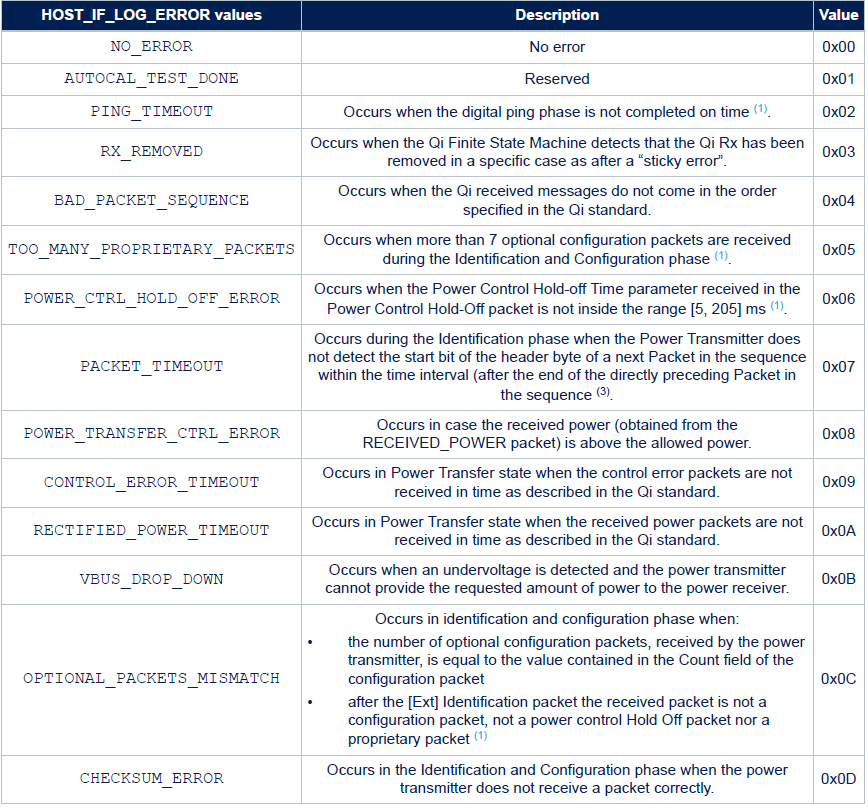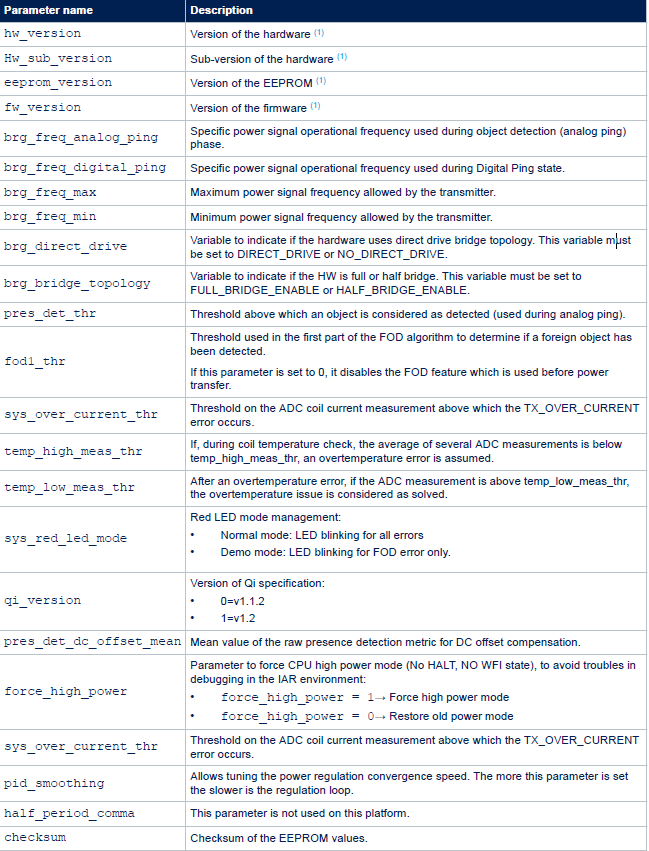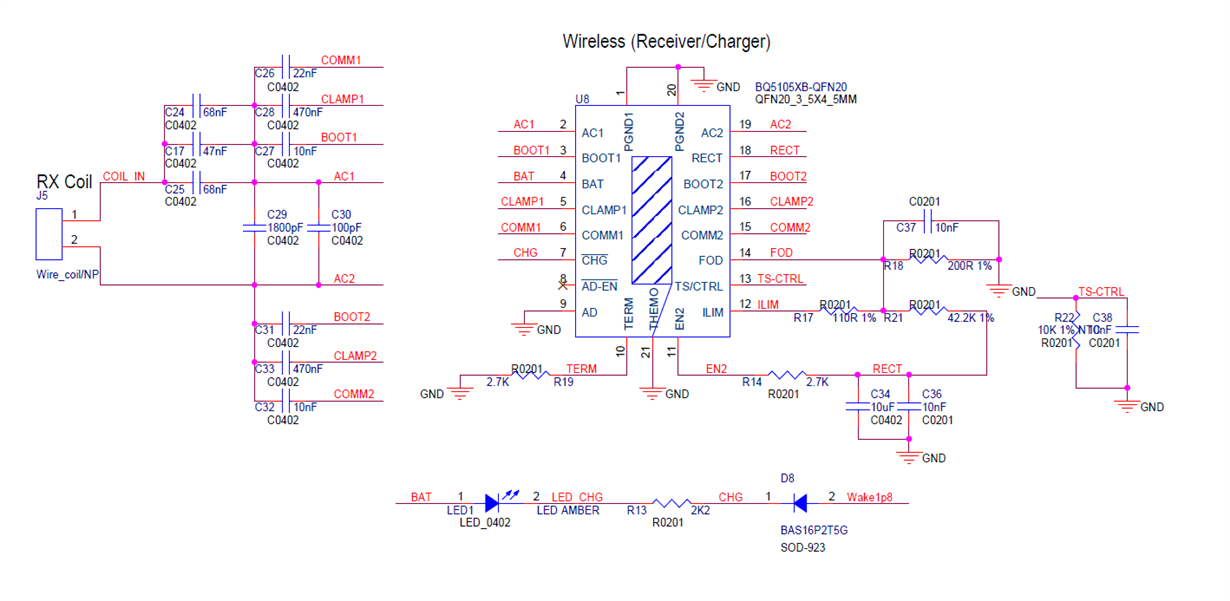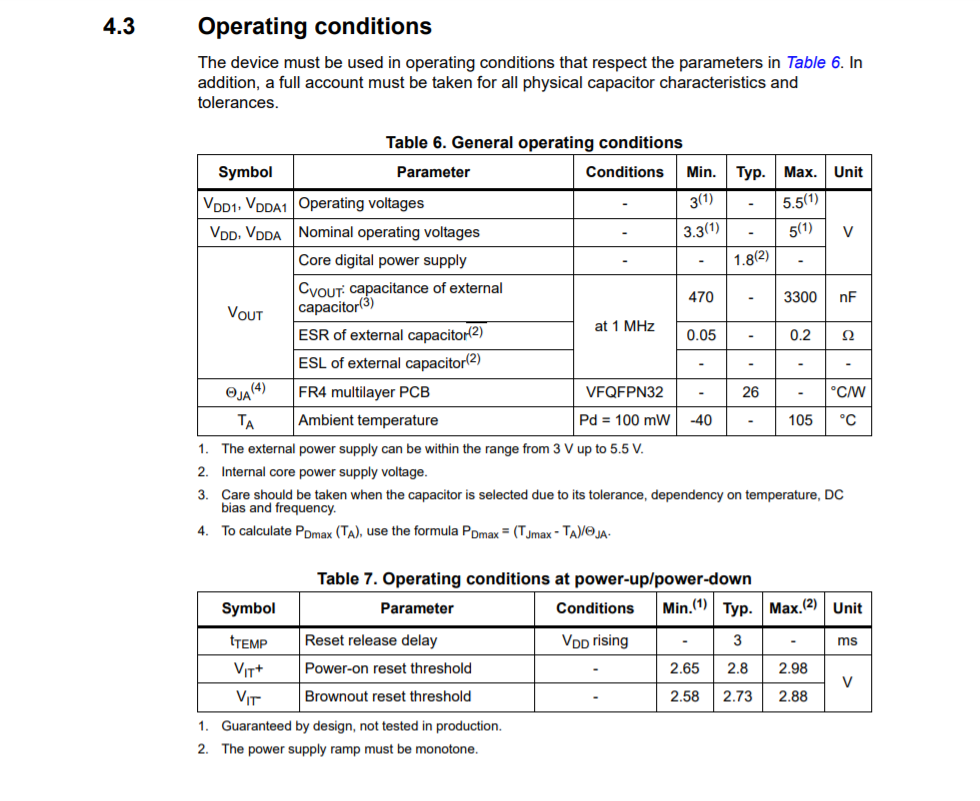Other Parts Discussed in Thread: BQ51003
I have a design that uses the STWBC-WA on the wireless power TX board and a TI BQ5105xB chip on the receiver side and I'm having a hard time getting the handshaking and charging to work. I am using the STEVAL-ISB045V1 with the Tx coil swapped out with the coil we are using for our design. I have got it to briefly work and apply a arge, but can not get it to work consistently. The error code appears to be CONTROL_ERROR_TIMEOUT which is causing the three rapid blinking lights to restart the Qi handshaking process. I have got it to work briefly by tweaking some of the configurable parameters on the STWBC chip via the STWBC GUI 3.48 software, but I'm looking for any specific guidance regarding a CONTROL_ERROR_TIMEOUT and what settings might affect that. Both chips are Qi compliant and when we did get the power transfer to initiate, we were able to see the Manufacturer show up as TI from the receiver, so that is working correctly. I'm trying not to tweak too much as I'm not sure what can damage the boards. I can provide the schematics if that helps.
The error codes and their details from the datasheet are as follows (we are seeing CONTROL_ERROR_TIMEOUT):
These are the configurable parameters we have to work with:
Our TX coil: TDK WT151512-22F2-ID
Our RX coil: TDK WR121210-27M8-ID
https://www.st.com/en/power-management/stwbc-wa.html
Any guidance with how to resolve this error would be greatly appreciated and I can provide more design files as necessary.





